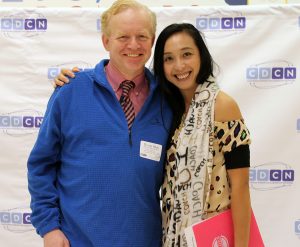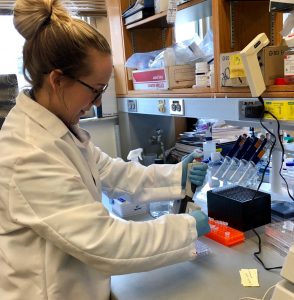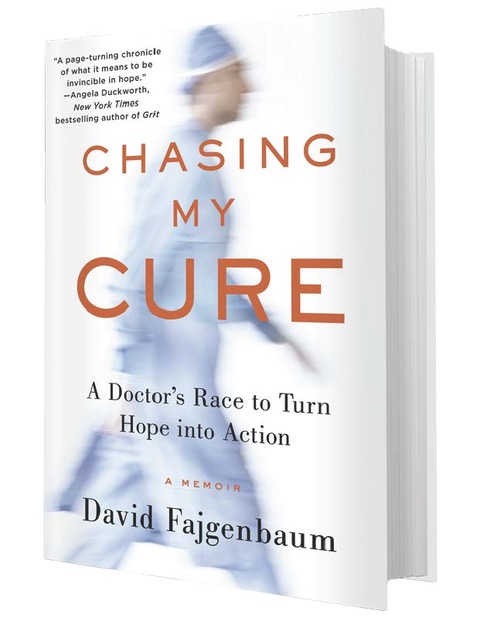The CDCN sets several areas of focus so as to achieve our mission of accelerating research and treatment for Castleman disease and improving patient care and survival by facilitating collaboration among the global research community, mobilizing resources, strategically investing in high-impact research, and supporting patients and their loved ones.
Patient Engagement
 The CDCN aims to support, empower, and educate patients with Castleman disease and their loved ones by providing resources and building community. Through our Patient Toolkit, we provide extensive and accurate information about Castleman disease that was written specifically for patients and loved ones. The Patient Support Pathway is designed to help our team keep track of and provide additional support to Castleman disease patients in the hospital. Our annual Patient and Loved One summit provides an incredible opportunity for patients and their loved ones to learn about Castleman disease from experts in the field, connect with other patients, loved ones, CDCN team members, and stay up to date on all of the groundbreaking research happening at the CDCN.
The CDCN aims to support, empower, and educate patients with Castleman disease and their loved ones by providing resources and building community. Through our Patient Toolkit, we provide extensive and accurate information about Castleman disease that was written specifically for patients and loved ones. The Patient Support Pathway is designed to help our team keep track of and provide additional support to Castleman disease patients in the hospital. Our annual Patient and Loved One summit provides an incredible opportunity for patients and their loved ones to learn about Castleman disease from experts in the field, connect with other patients, loved ones, CDCN team members, and stay up to date on all of the groundbreaking research happening at the CDCN.
Through consistently answering patient emails and phone calls as well as responding to patient inquiries on social media, the CDCN strives to provide the needed support for all people affected by Castleman disease. Castleman disease patients and their loved ones can join our community here.
Collaborative Research
By prioritizing, facilitating, and executing collaborative research, the CDCN aims to continuously move closer to finding a cure for Castleman disease. Through an annual Working Dinner for physicians and researchers held at the American Society of Hematology conference, we discuss the latest research and help guide our research agenda for the upcoming year to encourage breakthroughs that will measurably impact patients.
Some of the major Castleman disease research projects that the CDCN has facilitated or funded include the first diagnostic criteria for idiopathic multicentric Castleman disease, which combined with the first published treatment guidelines for iMCD, provide physicians with research-based tools to help effectively treat iMCD. Additionally, research led by the CDCN has led to the first novel treatment target for Unicentric Castleman disease, the PDGFRb mutation, as well as the first novel treatment target for iMCD, the mTOR pathway.
Through its continued funding and facilitation of collaborative research, the CDCN is dedicated to working with collaborators to conduct the highest-quality research at the fastest possible speed so as to one day find a cure for Castleman disease. More information about current and past CDCN-funded research projects can be found in our Research Pipeline.
ACCELERATE Registry and CastleBank (Biobank)
The CDCN knows firsthand that no one is more motivated than patients to find a cure for Castleman disease. Through the ACCELERATE Natural History study, which collects the medical records of Castleman patients, scientists analyze anonymous patient information to track trends in the disease. Both ACCELERATE and CastleBank, a biobank of tissue samples from Castleman disease patients that physicians and researchers can use for high-impact research studies, provide a plethora of datapoints and information that researchers can use to better understand and cure Castleman disease.
The CDCN has a goal to enroll 100 unique patients in ACCELERATE and 100 patients in the CastleBank each year so as to relentlessly pursue a cure for Castleman disease.
Events and Campaigns
 The CDCN is incredibly grateful for the support and engagement of community members through a variety of events throughout the year, who have all contributed to the CDCN’s mission. Through the Castleman disease Warrior program, a team of Castleman disease patients raise money and awareness about Castleman disease. Through annual events (Quest for a Cure Gala, World Castleman Disease Day, Giving Tuesday) and personal donations made through our webpage and other fundraisers, the CDCN is able to drive Castleman disease research forward. Over 90% of all dollars donated to the CDCN going directly to Castleman disease research, an unprecedented percentage for any disease-associated nonprofit organization. If you would like to help advance life-saving research and donate to the CDCN, please click here.
The CDCN is incredibly grateful for the support and engagement of community members through a variety of events throughout the year, who have all contributed to the CDCN’s mission. Through the Castleman disease Warrior program, a team of Castleman disease patients raise money and awareness about Castleman disease. Through annual events (Quest for a Cure Gala, World Castleman Disease Day, Giving Tuesday) and personal donations made through our webpage and other fundraisers, the CDCN is able to drive Castleman disease research forward. Over 90% of all dollars donated to the CDCN going directly to Castleman disease research, an unprecedented percentage for any disease-associated nonprofit organization. If you would like to help advance life-saving research and donate to the CDCN, please click here.
Physician Engagement
The CDCN hopes to continue to educate the medical community and identify experts for referral. Through peer-reviewed publications, conference meetings at the annual American Society of Hematology conference, and the maintenance of the Castleman disease UpToDate page (the premier resource used by physicians around the world to educate themselves about how to best treat each disease), the CDCN spreads awareness and knowledge about Castleman disease across the medical community. We plan to continue to expand our physician referral network as well as our physician network to facilitate physician education and ultimately improve patient care. Physicians and researchers can join the CDCN community here.
Clinical Trials

As part of our mission to improve the care and survival of patients with Castleman disease, the CDCN aims to support and educate the community about Castleman disease clinical trials as well as facilitating the research that forms the basis for clinical trials.
The University of Pennsylvania and the University of Arkansas for Medical Sciences has launched a clinical trial for the medication sirolimus for idiopathic multicentric Castleman disease patients that did not sufficiently respond to, or relapsed on, anti-IL6 treatment (siltuximab or tocilizumab). Learn more about the trial here.
Individual and Corporate Partners
The CDCN continues to seek generous individual and corporate partners as well as deepen and expand our existing partnerships so as to provide a consistent level of support for high-impact Castleman disease research. Learn more about our partnerships with the Chan Zuckerberg Initiative, Medidata, and Eusa Pharmaceuticals here.
 Communications
Communications
The CDCN leverages the power of communication outlets including our website, newsletter, and social media platforms to raise awareness about Castleman disease and the CDCN. In addition, CDCN co-founder, Dr. David Fajgenbaum, recently released his book Chasing My Cure which tells of his journey with Castleman disease and the CDCN. We hope this book will be a resource for patients and the community to learn more about Castleman disease and the CDCN.
Talent and Volunteer Planning
The CDCN continues to rely heavily on the hard work of volunteers both locally in Philadelphia and across the country to support the mission of the CDCN. We will continue to recruit and retain the talent of numerous skilled volunteers so that the CDCN can continue to pursue research at such a relentless pace, with over 90% of CDCN funding going directly to research. The skills of volunteers perfectly complement the talent of the CDCN, and this collaboration not only sustains the work of the CDCN, but allows it to flourish.
Expanding the CDCN’s approach to other rare diseases
The CDCN is thrilled to be recognized as a model of a patient-led research organization, as well as a leader in the rare disease space by the Chan Zuckerberg Initiative (CZI). The CDCN has partnered with CZI on the Rare as One Project. Learn more about the Rare As One Project.